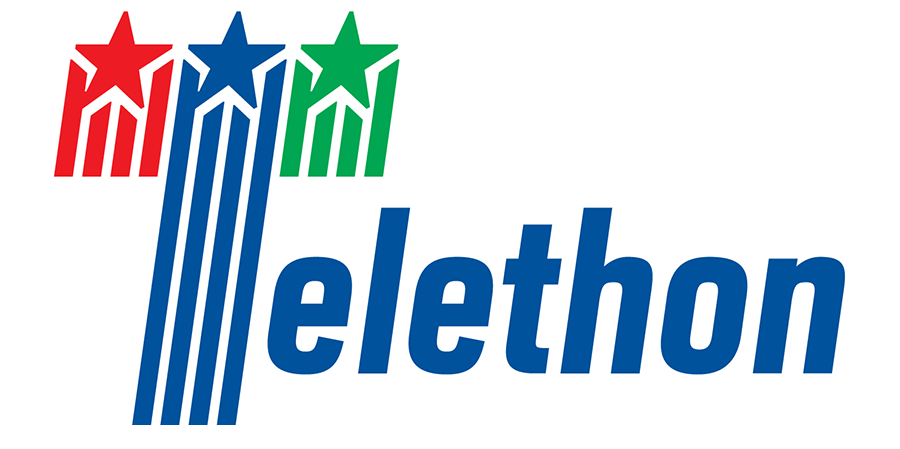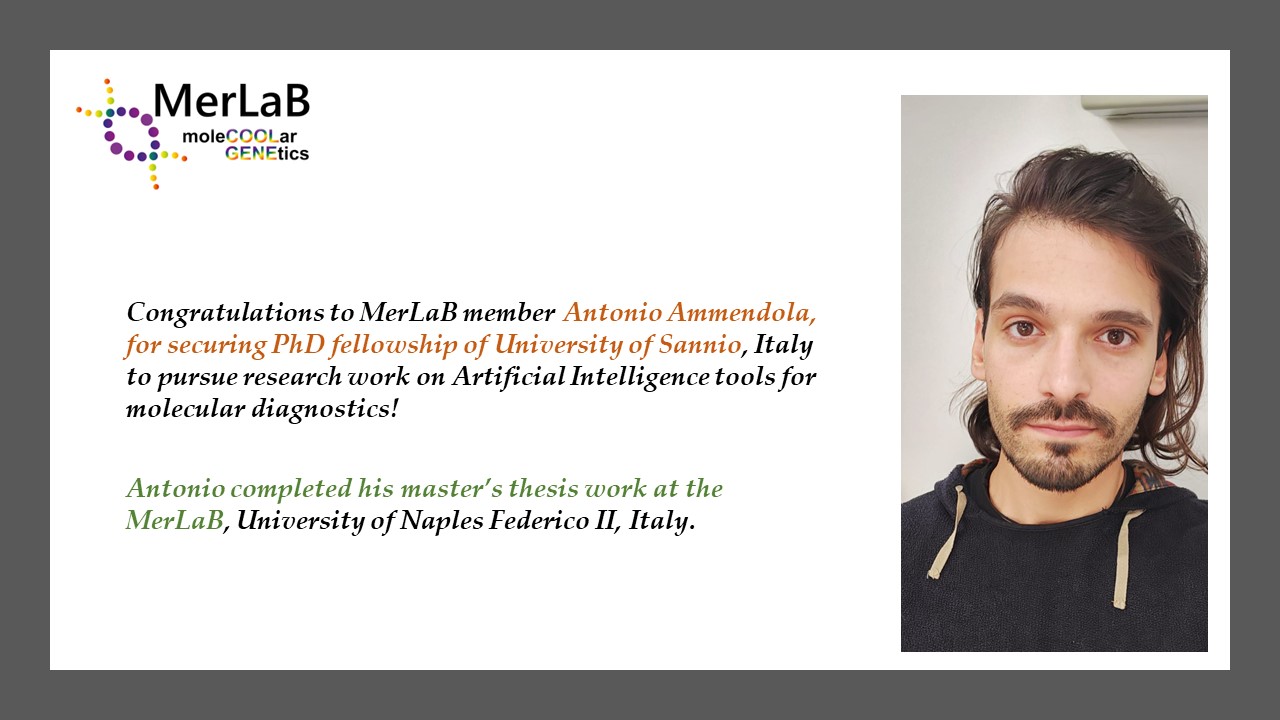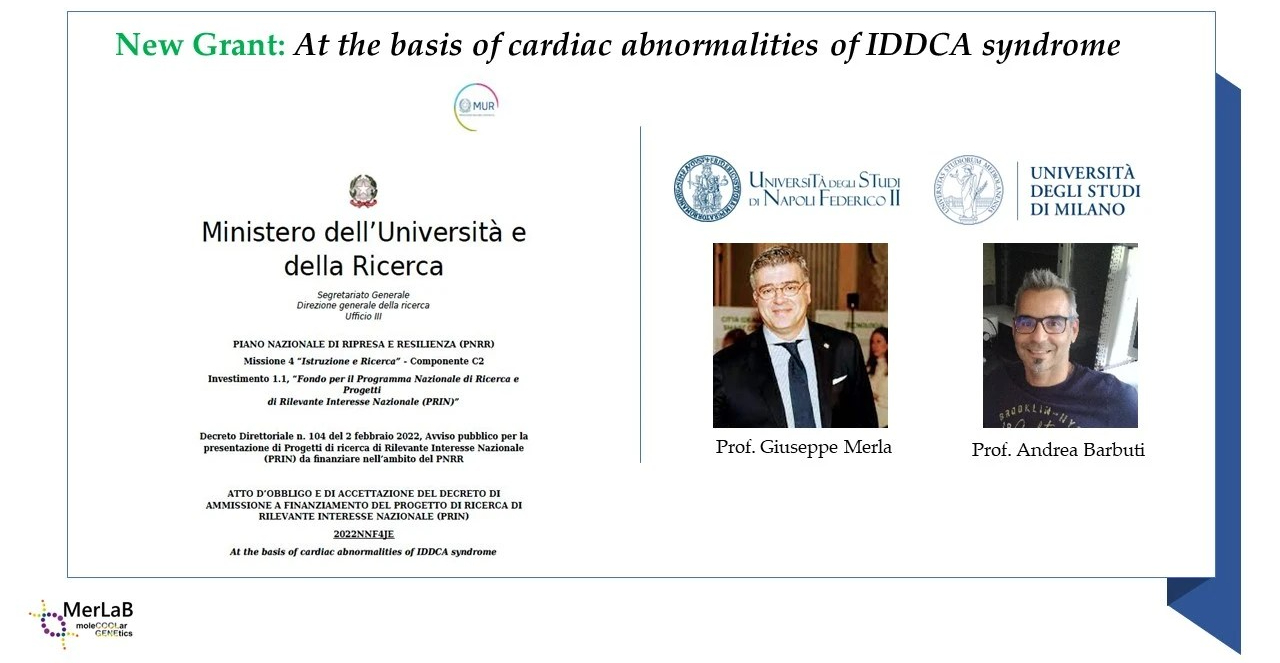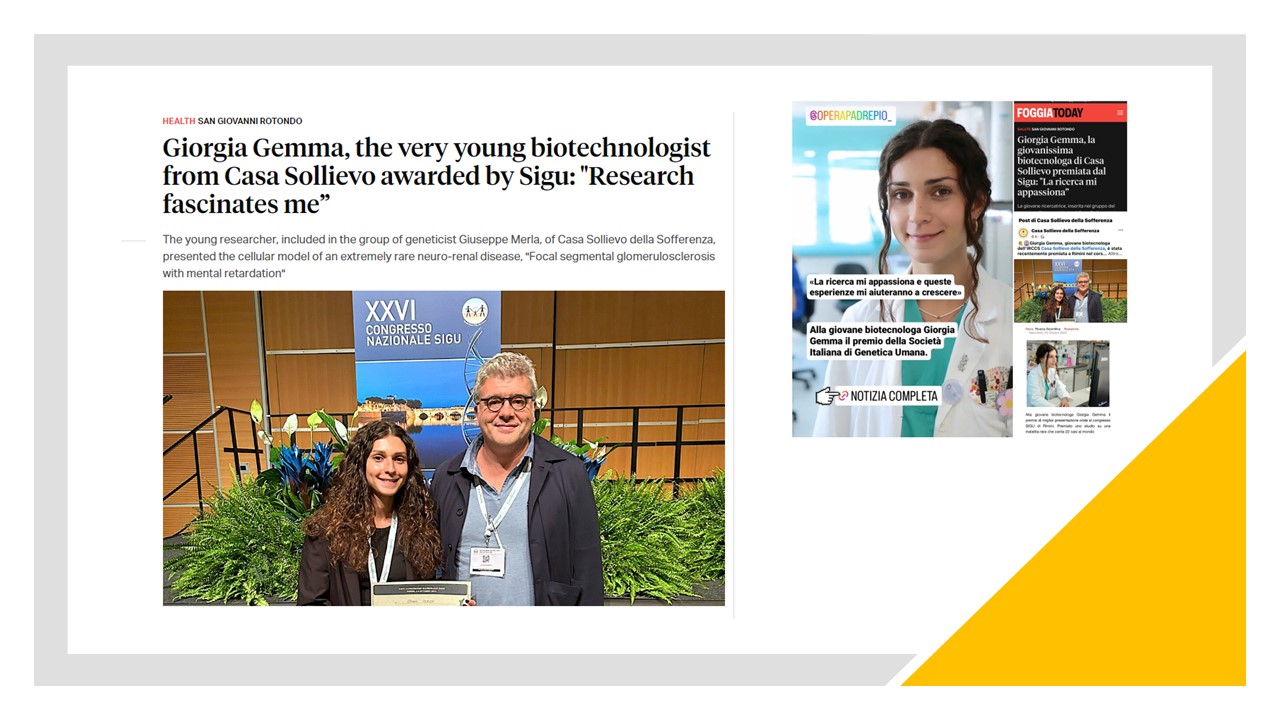
About Prof. Giuseppe Merla
Dr. Giuseppe Merla is a Full Professor of Molecular Biology at the Department of Molecular Medicine and Medical Biotechnology, University of Naples Federico II, and also the Director of Fondazione Telethon-Genomic and Genetics Disorders Biobank (GGNB), a member of EuroBioBank (European Network of DNA, Cell and Tissue banks) at the IRCCS Casa Sollievo della Sofferenza hospital. He was born on May 10, 1970 in San Giovanni Rotondo, Italy, and graduated in biological sciences from the University of Bari. He received his specialisation in medical genetics from the La Sapienza University of Rome. After five years of research with Prof. Andrea Ballabio at the Telethon Institute of Genetics and Medicine (TIGEM), first in Milan and then in Naples, in 2001 he moved to Switzerland, at the Department of Medical Genetics of the University of Geneva where he worked with Dr. Alexandre Reymond and Prof. Stylianos Antonarakis. Since 2004, Giuseppe Merla has been a group leader at the Medical Genetics Division of the IRCCS Casa Sollievo della Sofferenza, Italy. In 2016, Dr. Merla led the discovery of Intellectual Developmental Disorder with Cardiac Arrhythmia (IDDCA) syndrome, and the gene responsible for it. In 2019, he received the “Ambassador Day” award, and was declared as the ambassador of Kabuki Syndrome at the Royal Villa of Monza. His current research interests include Kabuki Syndrome, Chromatin-affected diseases (Chromatinopathies), and role of TRIM family proteins in the progression of Glioblastoma Multiforme (GBM).

"I chose to be a researcher because I still believe it is one of the few ways to help improve our existence. And I have chosen to study rare genetic diseases not only because they are a great model for understanding more general mechanisms, but because I have always been drawn to what for many (uninformed) causes are lost, hopeless."
- Prof. Giuseppe Merla
Ongoing Work
IDDCA
Intellectual developmental disorder with cardiac arrhythmia (IDDCA) syndrome (OMIM #617173) is an autosomal recessive neurodevelopmental disorder with onset in childhood characterized by delayed psychomotor development, severe intellectual disability and marked bradycardia which in some cases caused patient death, visual abnormalities and epilepsy. In 2016, in an international collaborative effort, we discovered IDDCA and Loss of Function mutations in the GNB5 gene, encoding G protein subunit β5, as the causative agent of IDDCA, which is involved in neuronal excitability and in heart rate control. Now, we are investigating the molecular mechanism of the disease through the integration of electrophysiology, biochemistry, and omics studies on cardiac and neuronal cells obtained from the iPSC of patients’ fibroblasts.
Chromatinopathies
Chromatinopathies include more than 50 OMIM disorders caused by genetic alterations of the various components of the epigenetic machinery affecting chromatin structure and function.Currently, the molecular diagnosis for these disorders is principally based on Next Generation Sequencing (NGS) of whole exomes or targeted gene panels. In the last few years, it is emerging how a daily-increasing number of these disorders exhibit a highly disease-specific genome wide DNA methylation profiles detectable in peripheral blood, referred to as episignature or EpiSigns. These genome-wide DNA methylation profiles currently include over 50 rare disorders in association with more than 60 genes. Since 2017, we have been analyzing more than 300 patients with a custom-made NGS targeted panel, and since 2020, we have been assessing the DNA methylation profiles of the same cohort in order to test the clinical utility of DNA methylation episignature for individuals affected with Chromatinopathy.
Glioblastoma
The human TRIpartite Motif containing protein 8 (TRIM8) is an E3 ubiquitin ligase, and comes under the TRIM protein family. Earlier we had shown TRIM8 is downregulated in glioblastoma, and this downregulation is associated with patients’ survival. Recently, we have shown that TRIM8 physically interacts with KIF11 and KIFC1 – two master regulators of mitotic assembly and both of which are involved in cancers, very particularly KIF11 has now been established as a driver of invasion,
proliferation, and self-renewal in glioblastoma.
More importantly, silencing of TRIM8 delays the mitotic progression. Currently we want to understand the importance and relevance of this function of TRIM8 in the context of glioblastoma.
Our sponsors








